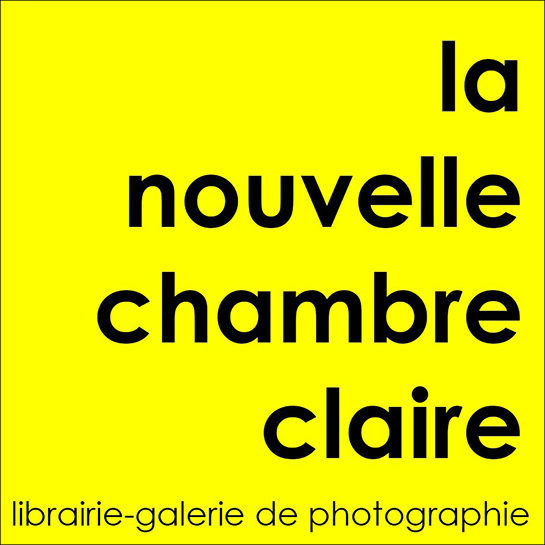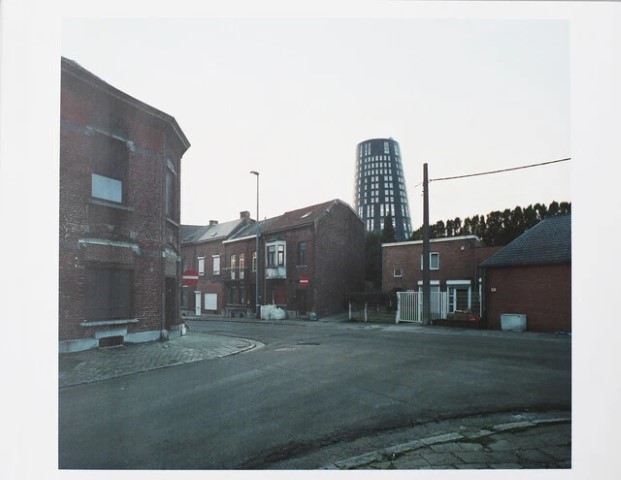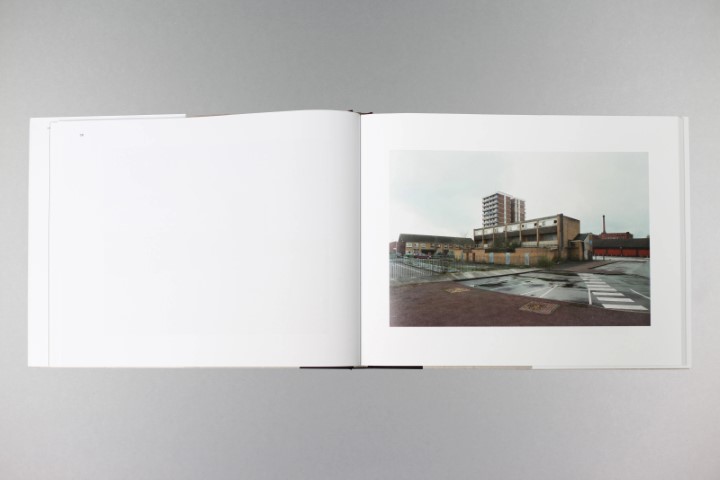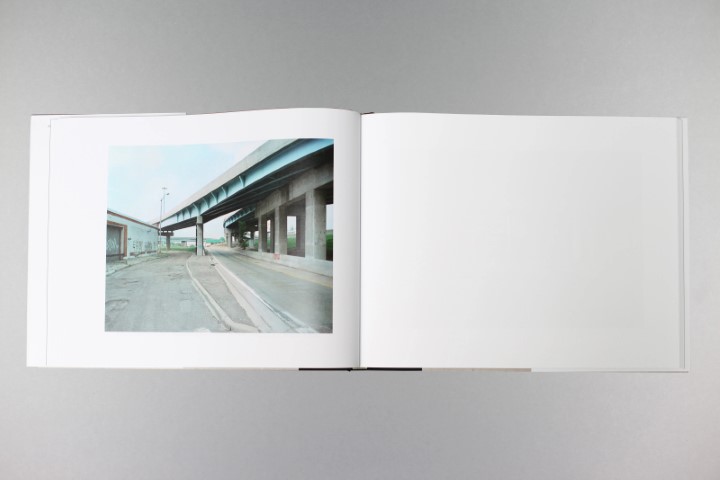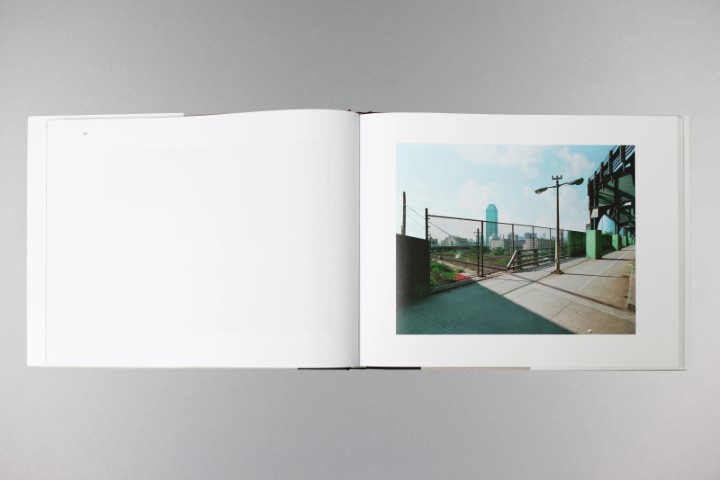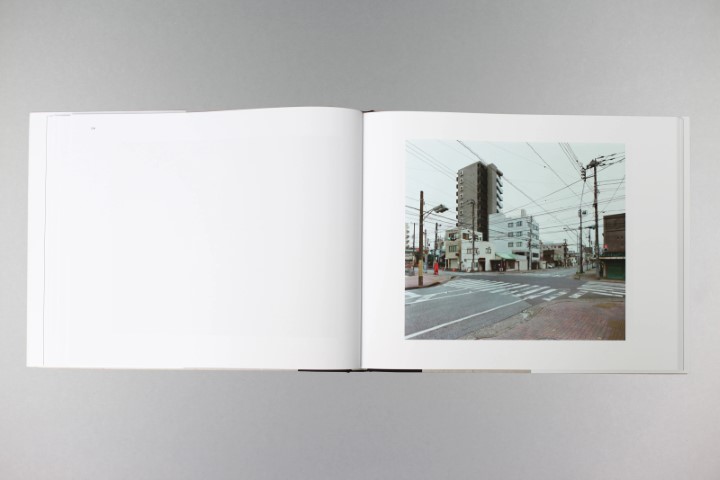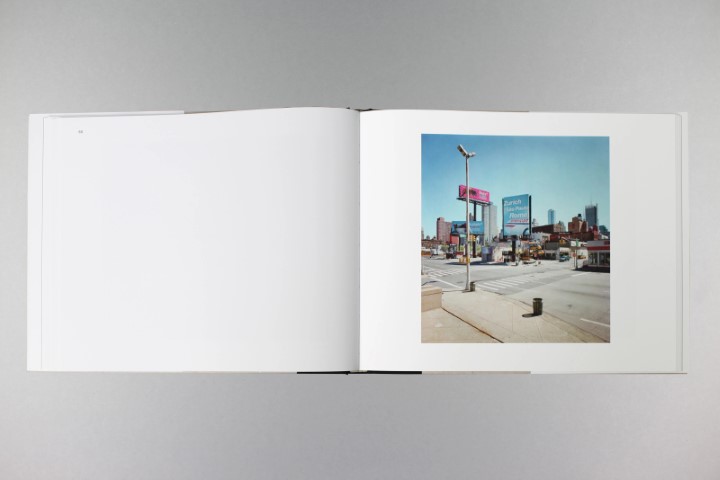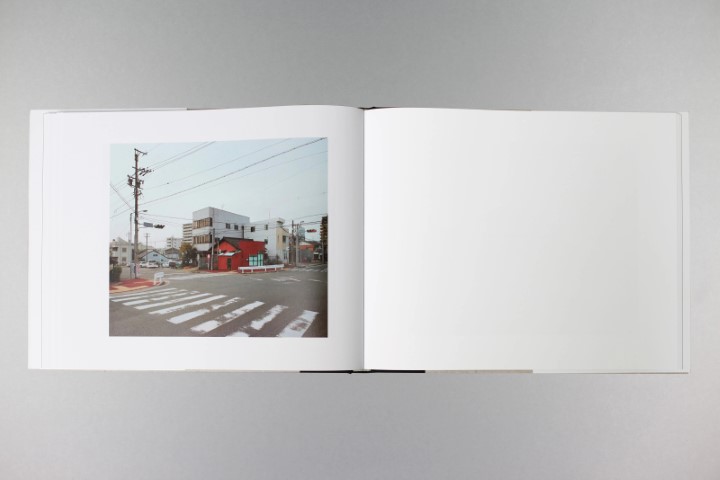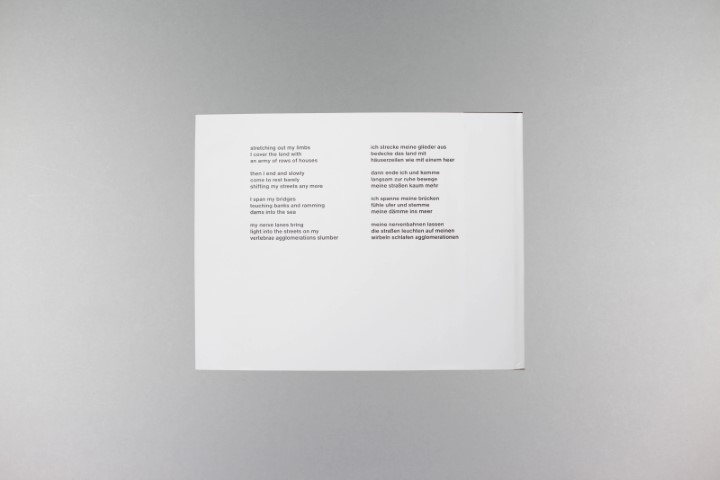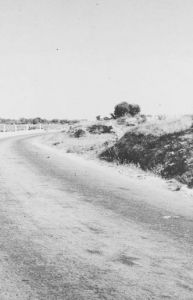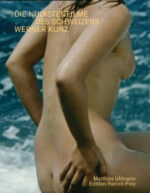Andreas Tschersich dépeint des paysages urbains dans lesquels les gens, l’entretien, les habitudes et les usages restent toujours cachés. Le ténor reste le même, que la scène se déroule à Charleroi, Liverpool, New York ou Tokyo. Les tableaux de Tschersich sont universels et ne semblent jamais étrangers ou interdits, mais jamais familiers dans leur banalité quotidienne, même pour ceux qui n’y sont jamais allés auparavant.
Andreas Tschersich est toujours à la recherche de motifs, pour être sûr, mais parfois ils viennent à lui par hasard. Il est un maître de l’art de perdre son chemin et de tirer le meilleur parti de cet état perdu comme un moment créatif. Alors qu’il parcourt la ville, parfois, c’est tout simplement là tout d’un coup : ce sentiment qu’il cherche à transmettre dans ses photographies. C’est la perception de ce moment de toucher-et-aller où tout est en jeu, l’instant avant qu’une décision fatale ne soit prise : abandon ou embourgeoisement, danger ou sécurité. Tout peut arriver à Tschersich. Il n’aime pas appeler ses photos des photographies architecturales ou voir des liens directs avec l’œuvre de Bernd et Hilla Becher, bien que son propre travail soit clairement en ligne avec la tradition photographique de l’enregistrement de la relation de l’homme à son (construit) Il s’agit de l’environnement depuis la seconde moitié du XXe siècle.
Afin de rester le plus près possible du « regard humain », l’expérience d’un instant, il utilise une méthode de montage numérique invisible pour le spectateur. Il met plusieurs négatifs de taille moyenne ensemble pour former une grande image afin de dépeindre de plus grandes sections sans déformer la perspective, ce qui serait inévitable dans une exposition à prise unique construite mécaniquement à l’aide d’un appareil photo grand format. En un mot, Andreas Tschersich utilise la technologie non pas pour falsifier la réalité, mais pour « s’y accrocher le plus possible ».
Andreas Tschersich portrays cityscapes in which people, upkeep, habits and uses always remain hidden. The tenor remains the same regardless of whether the scene is set in Charleroi, Liverpool, New York or Tokyo. Tschersich’s pictures are universal and never seem foreign or forbidding, but ever familiar in their everyday banality, even to those who’ve never been there before.
Andreas Tschersich is always on the lookout for motifs, to be sure, but sometimes they just come to him by serendipity. He is a master of the art of losing his way and making the most of that lost state as a creative moment. As he roams the city, sometimes it’s simply there all of a sudden: that feeling he seeks to convey in his photographs. It is the perception of that touch-andgo moment when everything hangs in the balance, the instant before a fateful decision is to be reached: dereliction or gentrification, danger or safety. Anything can happen to Tschersich’s locations. He is averse to calling his pictures architectural photographs or seeing any direct ties to Bernd and Hilla Becher’s work, although his own work is clearly in line with the photographic tradition of recording man’s relationship to his (built) environment since the second half of the 20th century.
In order to keep as close as possible to the “human gaze”, the experience of an instant, he makes use of a method of digital montage invisible to the viewer. He puts several medium-sized negatives together to form one big picture in order to portray larger sections without distorting the perspective, which would be inevitable in a mechanically constructed single-shot exposure using a large format camera. In a word, Andreas Tschersich makes use of technology not to falsify reality, but to “cling to it as closely as possible”.
